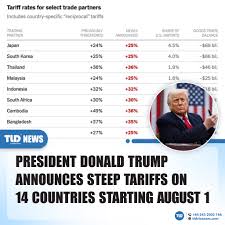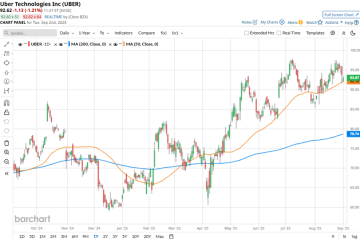Understanding Trump Tariffs and Their Global Impact

Introduction
Trump tariffs refer to a series of protective duties imposed on various goods and products during Donald Trump’s presidency, aiming to boost American manufacturing and reduce trade deficits. The relevance of this topic can be seen in the ongoing economic discussions and negotiations that shape international trade dynamics even today. With a significant impact on consumer prices and global supply chains, understanding the implications of these tariffs is crucial for consumers, businesses, and policymakers.
Details of Trump Tariffs
Initiated in 2018, the Trump administration implemented tariffs that heavily targeted imports from China, levying rates as high as 25% on certain products like steel and aluminum. The intention was to protect American industries from foreign competition and address what Trump described as unfair trade practices. These tariffs sparked a series of retaliatory measures from China, escalating tensions between the two nations and leading to a protracted trade war. Additionally, tariffs were applied to Canadian lumber and European car imports, resulting in disruptive impacts on bilateral trade relations.
The U.S. government aimed to support domestic producers, which saw varying levels of success. Some sectors, such as steel manufacturers, reported increased profits and domestic job creation, while other industries, particularly agriculture, faced challenges due to retaliatory tariffs imposed by countries like China, which adversely affected U.S. farmers exporting soybeans and other goods. The National Association of Manufacturers estimated that the tariffs cost American consumers around $1.4 billion per month, leading to price increases on a variety of products.
Current Situation and Future Outlook
As of October 2023, the Trump tariffs remain a contentious issue in American politics, with debates ongoing concerning their long-term effects on the economy. The Biden administration has yet to significantly alter these tariffs, bringing into question their future and the potential for new trade agreements. Economists are divided on whether removing the tariffs would benefit consumers through lower prices or if it would harm domestic industries that have adapted to this environment.
Looking ahead, it is clear that tariffs will continue to influence the direction of U.S. trade policy and relationships with other nations. Observers will be watching closely how domestic industries respond and whether new trade agreements will emerge to navigate the global economic landscape effectively.
Conclusion
Trump tariffs represent a pivotal chapter in U.S. trade policy, affecting consumers, businesses, and international relations. As discussions around trade agreements and economic strategies continue, understanding the lasting significance of these tariffs is essential for stakeholders across the board.









